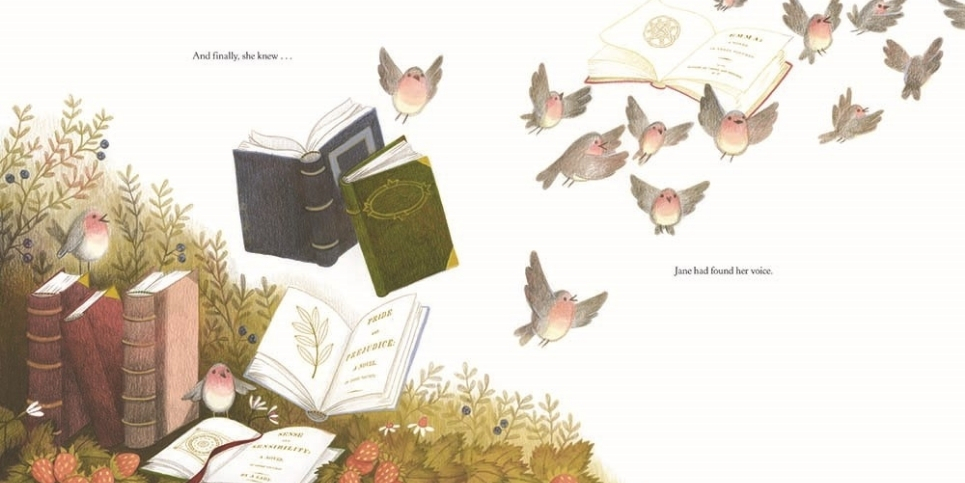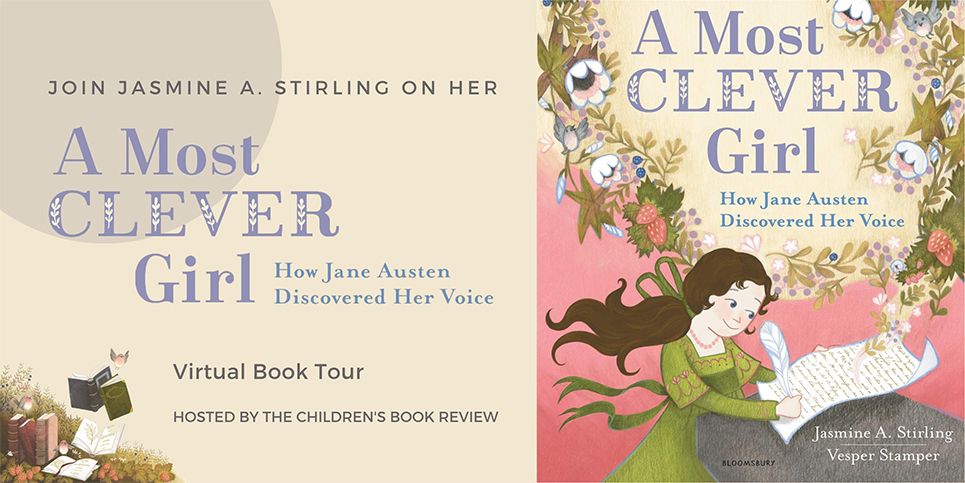How to Teach Kids About Writer’s Voice
By Jasmine A. Stirling, author of A Most Clever Girl: How Jane Austen Discovered Her Voice
The Children’s Book Review
Voice is the imprint of ourselves on our writing.
Donald Graves
As a writer and mom of two young girls, I invest a lot of energy in getting my family excited about writing. We do this in all kinds of ways—by writing letters to our house fairy and leaving them at her fairy door, by creating stop-motion animated films—which we script in advance, by storyboarding and acting out audiobooks that we’re listening to, and by creating new versions of classic stories like Little Red Riding Hood. Even though my kids get all kinds of great instruction at school, I want to be sure we do literacy activities at home—because they are fun, memorable experiences, and because I know that family culture is critical for developing a lifelong passion for learning.
One of the things I’m most excited about as a writer is helping kids develop their own writing voice. I loved writing A Most Clever Girl: How Jane Austen Discovered Her Voice because it allowed me to take a really complex subject—Jane Austen’s revolutionary new way of writing—and distill it down to its most basic form so that elementary school children could get a sense for what Austen was doing in her novels.
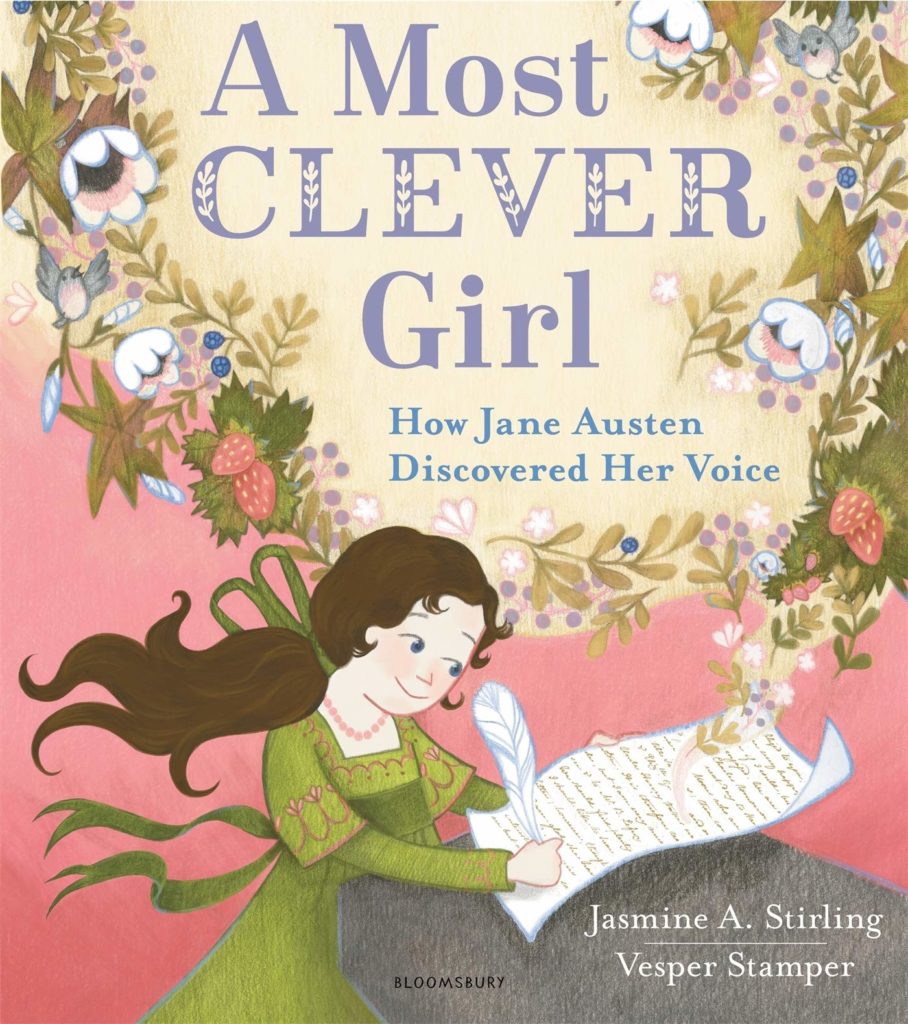
Writer’s voice is a powerful and exciting tool for children to grasp, because playing with voice is just that—play. Once kids understand that they can try on different writing styles like hats and shoes, writing becomes more like other kinds of play and less like a chore.
Here are some activities that I have done with my kids to help them understand what writer’s voice is all about. Try them out at home or in the classroom and let me know how they worked for you!
Getting Started: How to Teach Kids About Writer’s Voice
First, I explain that the word voice has multiple meanings. In everyday speech, when we talk about voice, we mean the sound that comes out of your mouth when you talk, yell, laugh or sing. You can make loud sounds with your voice, or quiet ones, or you can choose not to speak at all.
When we talk about a writer’s voice, we are using the word voice in a different and new way. A writer’s voice is the personality behind a piece of writing; it’s the way the author expresses themselves.
Many authors have a consistent voice across many different books, even when the subjects of the books are very different. Think of the books Green Eggs and Ham, The Cat in the Hat, The Lorax, and The Grinch. All of these stories are different, but all three are written distinctively in the voice of Dr. Seuss.
A writer’s voice comes from their personality, sense of humor, and way of looking at the world.
While we are learning about writer’s voice, I encourage kids to try on different styles like they might try on hats and shoes, to see what suits them best. As they grow up, they might develop and find a consistent style, but for now, the goal is just to play with voice.
Here are some exercises to help them get there:
Exercise #1:
Dictate a short story to an adult about a dog who saves a girl from drowning after she falls off of a bridge into a river. (5 minutes)
Activity A:
Perspective
- Tell the story from the perspective of the dog, then the girl, then the girl’s parents. How about from the perspective of the river?
Activity B:
Narrative voice
Now, discuss:
- How would a teacher tell the story to her students before a field trip?
- How would you explain this to a toddler?
- How would a stand-up comic talk about it on stage?
- How would the mayor say it if they were speaking to the president?
- How would a dog trainer talk about this to other dog owners?
- How would an evil villain describe this to her or his assistant?
- What would a newspaper article say about the incident?
How does the story change when different people tell it, or when it is changed for different people to hear it?
The different ways of telling the story use different voices. The facts are the same, but the story is told differently.
How does changing the perspective change the voice of the story?
Exercise #2:
VOICE WORDS
Print these out, cut them up and use them for each activity below:
Serious
Silly
Happy
Mean
Sweet
Magical
Naughty
Yucky
Sad
Scary
Real
Variation:
Have the kids come up with their own Voice Words.
Now read the following passages and pick the Voice Words that most describe each passage.
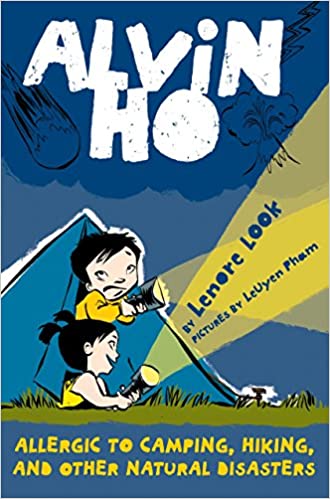
Alvin Ho: Allergic to Camping, Hiking, and Other Natural Disasters
Written by Leonore Look
You will know some things about me if you have read a book called Alvin Ho: Allergic to Girls, School, and Other Scary Things. But you won’t know all about me, so that is why there is now this second book.
In case you missed it, my name is Alvin Ho. I was born scared and I am still scared. Things that scare me include:
Long words (especially “hippopotomonstro- sesquipedaliophobia,” which means fear of long words).
Punctuation. (Except for exclamation points! Exclamations are fantastic!!!)
The dark (which means I have nyctophobia).
The great outdoors. (What’s so great about it?) Lots of things can happen when you’re outdoors:
Hurricanes.
Tornadoes.
Mudslides.
Landslides.
The end of the world.
I am scared of many more things than that. But if I put all my scares on one list, it would mean years of therapy for me. And I already go to therapy once a month on account of it’s supposed to help me not be so scared. But my brother Calvin says when you’re born a certain way, that’s the way you’ll always be, so you might as well hug your inner scaredy-cat.
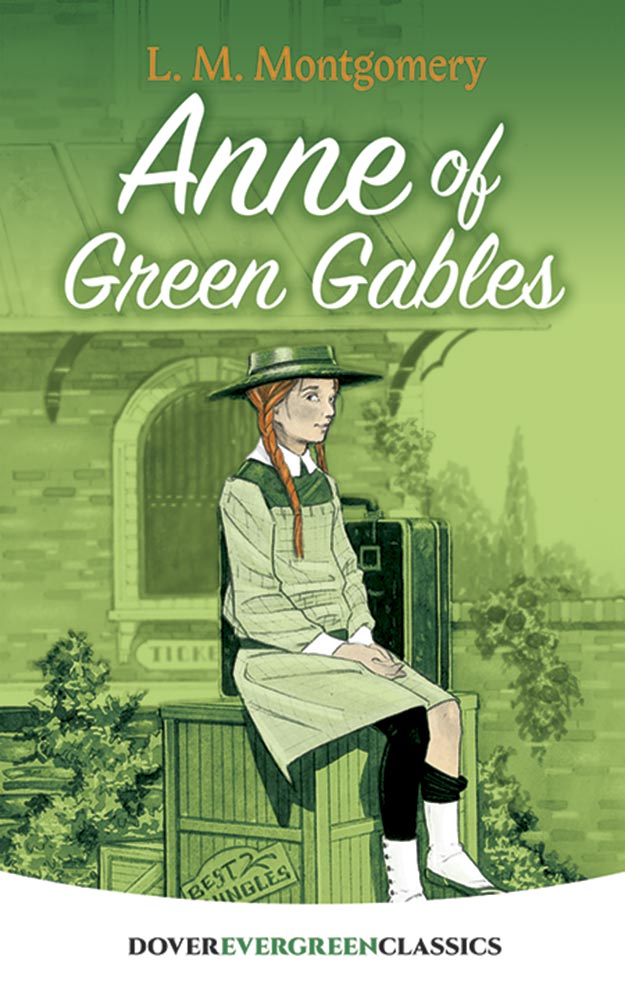
Written by L. M. Montogmery
It was broad daylight when Anne awoke and sat up in bed, staring confusedly at the window through which a flood of cheery sunshine was pouring and outside of which something white and feathery waved across glimpses of blue sky . . . .
Anne dropped on her knees and gazed out into the June morning, her eyes glistening with delight. Oh, wasn’t it beautiful? Wasn’t it a lovely place? Suppose she wasn’t really going to stay here! She would imagine she was. There was scope for imagination here.
A huge cherry-tree grew outside, so close that its boughs tapped against the house, and it was so thick-set with blossoms that hardly a leaf was to be seen. On both sides of the house was a big orchard, one of apple-trees and one of cherry-trees, also showered over with blossoms; and their grass was all sprinkled with dandelions. In the garden below were lilac-trees purple with flowers, and their dizzily sweet fragrance drifted up to the window on the morning wind.
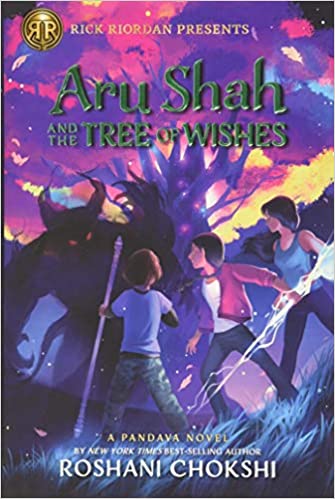
Aru Shah and the Tree of Wishes
Written by Roshani Chokshi
Aru Shah had a gigantic lightning bolt, and she really wanted to use it.
“Please don’t, Shah,” begged her friend Aiden. “If you electrocute the targets with Vajra . . . we’ve blown this Pandava mission.”
“Puh-leeze,” said Aru, hoping she sounded more confident than she felt. “I’m the daughter of the god of thunder and lightning. Electricity is practically my thing.”
“Yesterday you stuck a fork in the toaster,” pointed out Aiden.
“It was just for a second, and it was holding my breakfast prisoner.”
A gust of wind hit the back of Aru’s head, and she turned to see a huge eagle with sapphire-colored feathers swooping toward them. The bird dove to the ground and in a flash of blue light transformed into Brynne, her soul sister and the daughter of the god of the wind.
“No visuals on the targets,” Brynne said. “Also, Aiden’s right. I seriously don’t trust you around electricity.”
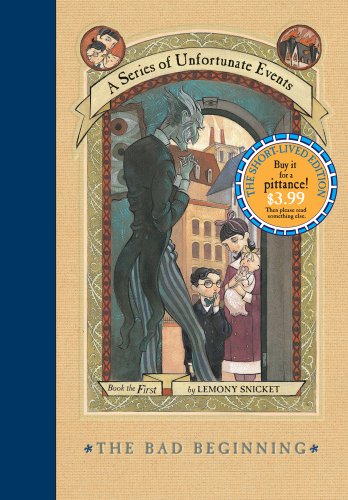
A Series of Unfortunate Events
Written by Lemony Snicket
The story of the Baudelaire orphans is like an onion, and if you insist on reading each and every thin, papery layer in A Series of Unfortunate Events, your only reward will be 170 chapters of misery in your library and countless tears in your eyes. Even if you have read the first twelve volumes of the Baudelaires’ story, it is not too late to stop peeling away the layers, and to put this book back on the shelf to wither away while you read something less complicated and overwhelming. The end of this unhappy chronicle is like its bad beginning, as each misfortune only reveals another, and another, and another, and only those with the stomach for this strange and bitter tale should venture any farther into the Baudelaire onion. I’m sorry to tell you this, but that is how the story goes.
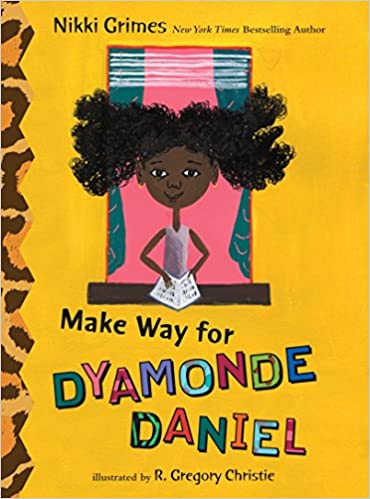
Written by Nikki Grimes
Diamond sucked her teeth. Too rude, thought Diamond. Aloud she said, suit yourself, and went on to the lunchroom without him. The seats in the lunchroom filled up fast. Not that it mattered to Diamond, she already knew where she was going to sit. Diamond got in line and bought a milk to go with her peanut butter and jelly sandwich she’d brought from home, then took a seat with Tonya, Talisha, and Tameka, the three T’s. They weren’t about to let Diamond into their little group, but they were nice enough to her at school. Sitting at their table during lunch made her feel a little less alone.
One plus three equals four, thought Diamond. Four is a nice sturdy number, like a table with four legs or a square all cozy and zipped up on all four sides. Diamond liked even numbers. In fact, Diamond liked numbers period. Math made sense to her. Numbers were neat and easy and solid. Not like English, which was full of rules that change all the time. Yes, math was best. Math was something you could always count on. Well, mostly. For a long time after her mom and dad got divorced, Diamond hated math because all she could see was subtraction. Mom’s voice minus dad’s. Two for breakfast, instead of three. Monday night TV, minus the football. It just didn’t feel right at first, but things were a little better now.
Discussion:
Which passage did you like the best? Why?
Did you dislike any of the passages? Why?
Do you think that the personality of each of these writers is different? How?
Do any of these pieces of writing feel more like “you”? Do any feel completely different than you? Why?
Exercise #3
Activity A:
First, read through the following passages:
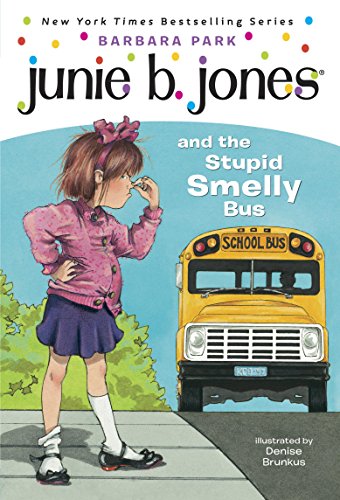
Written by Barbara Park
The bus wasn’t like my daddy’s car at all. It was very big inside. And the seats didn’t have any cloth on them.
The little curly girl was sitting near the front. And so I tapped on her.
“Guess what?” I said. “Mother said for me to sit here.”
“No!” she said. “I’m saving this seat for my best friend, Mary Ruth Marble!”
Then she put her little white purse on the place where I was going to sit.
And so I made a face at her.
“Hurry up and find a seat, young lady,” said Mr. Woo.
And so I quick sat down across from the curly mean girl. And Mr. Woo shut the door.
It wasn’t a regular kind of door, though. It folded in half. And when it closed, it made a whishy sound.
I don’t like that kind of door. If it closes on you by accident, it will cut you in half, and you will make a squishy sound.
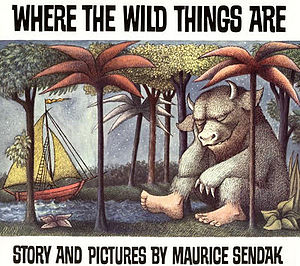
Written by Maurice Sendak
The night Max wore his wolf suit and made mischief of one kind
and another
his mother called him “WILD THING!”
and Max said “I’LL EAT YOU UP!”
so he was sent to bed without eating anything.
That very night in Max’s room a forest grew
and grew
and grew until his ceiling hung with vines
and the walls became the world all around
and an ocean tumbled by with a private boat for Max
and he sailed off through night and day
and in and out of weeks
and almost over a year
to where the wild things are.
Next, choose one of the passages and fill in your own words in the blanks.
1.
The bus wasn’t like my daddy’s car at all. It was _________. And the seats didn’t ______________________.
The little curly girl was sitting near the front. And so I ___________.
“Guess what?” I said. “Mother said for me to sit here.”
“No!” she said. “I’m saving this seat for my best friend, Mary Ruth Marble!”
Then she ____________________________________ .
And so I _____________________________________.
“Hurry up and find a seat, young lady,” said Mr. Woo.
And so I quick sat down across from the curly mean girl. And Mr. Woo ___________.
It wasn’t a regular kind of door, though. It folded in half. And when it closed, it made a whishy sound.
I don’t like that kind of door. If it closes on you by accident, it will cut you in half, and you will ______________.
2.
The night _________ wore his/her __________ and made mischief of one kind
and another
his mother called him “________________”
and Max said “_________________!”
so he was sent to bed without __________________.
That very night in Max’s room a _____________ grew
and grew
and grew until his ceiling ____________________
and the walls became the world all around
and a/an __________ tumbled by with a ______________ for Max
and he sailed off through night and day
and in and out of weeks
and almost over a year
to where the wild things are.
Discussion:
How did the passage change when you filled in your words? Was the voice the same, or different?
Select the Voice Words that best describe each passage. Are they the same or different than the original passage? Why or why not?
Does this passage feel like your style? Why or why not?
Activity B:
Now, choose a Voice Word and fill in the blanks using that word as a guide for the kind of story you tell.
Is the voice of the piece different when you try to make it scary, sad, or funny?
Exercise #4
Choose your favorite of the passages in Exercise #2. Now, dictate a story to an adult or to your writing buddy using using the same style. Or, write your story down. (5-10 minutes)
Was this difficult or easy? Did you feel like the writing was your style, or not?
Exercise #5
Activity A:
Now, select one Voice Word and take dictate to an adult, or write down, a story that could be described with that word. Does the story you wrote feel like your style? Was it easy or difficult to write your story? (10 minutes)
Activity B:
Choose 1-3 different Voice Words and write another story, then answer the same questions. (10 minutes)
Tackling the subject of writer’s voice with children is not as daunting as it might initially appear. I hope this article has inspired you to give it a try and see where the journey takes you!
—
About Jasmine A. Stirling
Jasmine A. Stirling is the debut author of A Most Clever Girl: How Jane Austen Discovered Her Voice, a picture book biography of Jane Austen about persistence and creative mastery. Jasmine lives on a cheerful street in San Francisco with her husband, two daughters, and their dog. From a young age, she loved to write poems and stories and worked her way through nearly every children’s book (and quite a few for grownups, too) in her local library. When she’s not writing, Jasmine can be found hiking in the fog, singing songs from old musicals, and fiddling with her camera.
Jasmine first fell in love with Jane Austen as a student at Oxford, where she read her favorite of Jane’s six masterful novels, Persuasion. A Most Clever Girl is her dream project, done with her dream team—award-winning illustrator Vesper Stamper and Bloomsbury Children’s Publishing. Jasmine also has a YA/New Adult history of the women’s suffrage movement out soon, titled We Demand An Equal Voice.
Visit www.jasmineastirling.com to get a free Jane Austen paper doll kit with the purchase of A Most Clever Girl. While you’re there, enter to win a Regency tea party gift basket!
Follow Jasmine on Instagram and Facebook@jasmine.a.stirling.author where she posts about kidlit and life with two young girls.
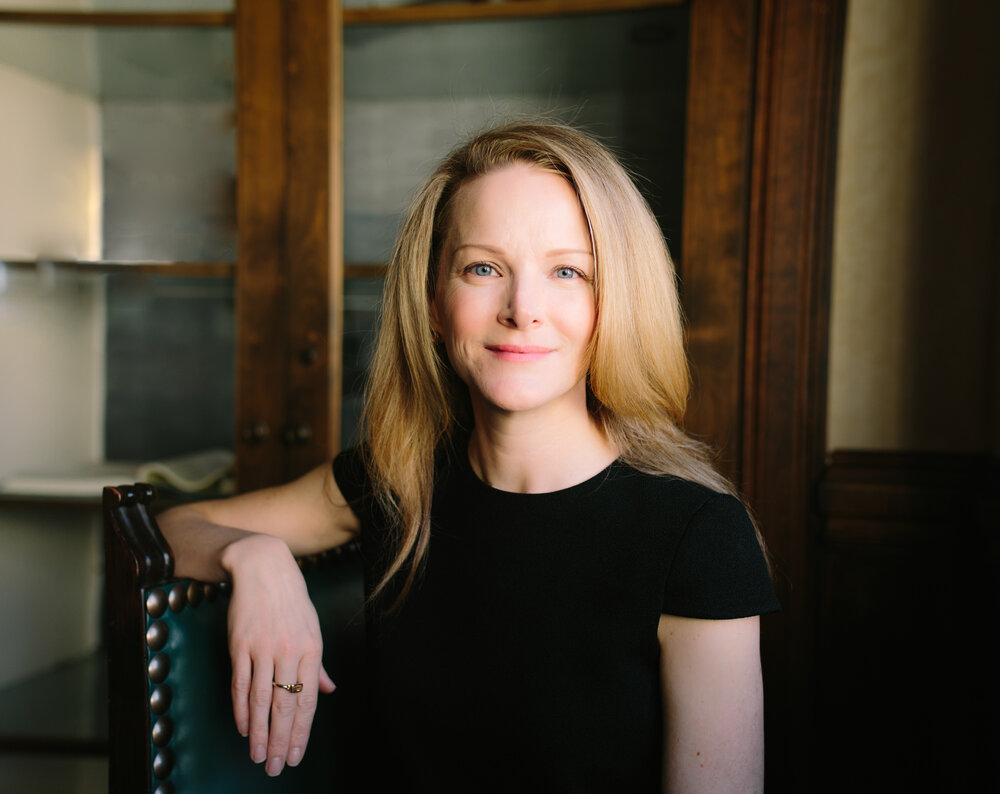
About the Book

A Most Clever Girl: How Jane Austen Found Her Voice
Written by Jasmine A. Stirling
Illustrated by Vesper Stamper
Ages 4-12 | 48 Pages
Publisher: Bloomsbury Children’s Books | ISBN-13: 978-1547601103
Publisher’s Synopsis: Witty and mischievous Jane Austen grew up in a house overflowing with words. As a young girl, she delighted in making her family laugh with tales that poked fun at the popular novels of her time, stories that featured fragile ladies and ridiculous plots. Before long, Jane was writing her own stories-uproariously funny ones, using all the details of her life in a country village as inspiration.
In times of joy, Jane’s words burst from her pen. But after facing sorrow and loss, she wondered if she’d ever write again. Jane realized her writing would not be truly her own until she found her unique voice. She didn’t know it then, but that voice would go on to capture readers’ hearts and minds for generations to come.
Buy the Book
This article, How to Teach Kids About Writer’s Voice, was written by Jasmine A. Stirling, author of A Most Clever Girl: How Jane Austen Discovered Her Voice (Bloomsbury Children’s Books). The header image is an illustration by Vesper Stamper, illustrator of A Most Clever Girl.

